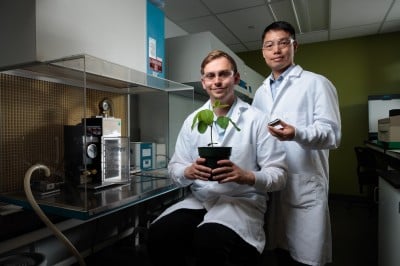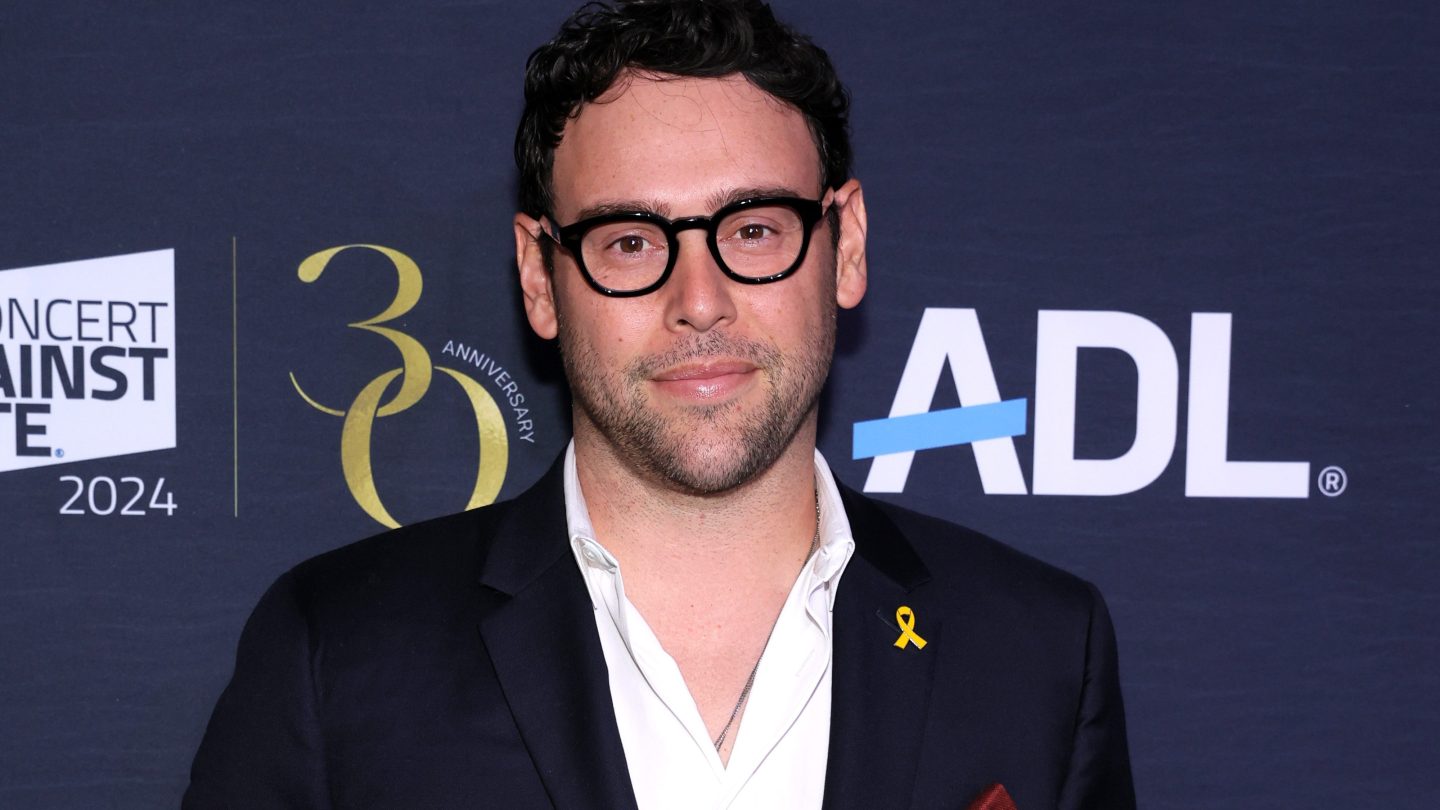AMES, Iowa – Plant scientists have used a standard “gene gun” since 1988 to genetically modify crops for better yield, nutrition, pest resistance and other valuable traits.
That technology, which loads genetic materials on tiny particles and uses high pressure to shoot them into plant cells, has presented challenges to plant scientists, including inefficiency, inconsistency and even tissue damage caused by high-velocity particles.
But that was just the way these experiments worked, and plant scientists worked around the challenges.
“We didn’t even know we had a problem,” said Kan Wang, an Iowa State University agronomist and Charles F. Curtiss Distinguished Professor in Agriculture and Life Sciences.
Shan Jiang, an Iowa State associate professor of materials science and engineering, wondered if his research group could do something to improve that basic tool of plant research. Ultimately, he and the group determined plant scientists had been “shooting a bullet without a barrel” for 40 years.
A paper just published by the journal Nature Communications details the research team’s search for a solution, its subsequent findings and the invention that launched a startup company.
The project was more than solving a single engineering problem, though. Jiang, because of his research resume, really wanted to use his engineering approach to improve plant science and, potentially, human lives.
Post-doc lessons
After earning his doctorate from the University of Illinois Urbana-Champaign, Jiang went to work as a post-doctoral researcher in the Langer Lab at the Massachusetts Institute of Technology.
That’s the lab of Robert Langer, once called the “smartest man in Boston” by the Boston Globe and co-founder and, until last August, a board member for Moderna, Inc., a leader in the creation of mRNA medicine, including vaccines for COVID-19.
Jiang was one of 15 post-docs working on new ideas to deliver genetic materials for medical therapies.
“It was such difficult research,” he said.
But one outcome, even after research funding dried up, was the use of messenger RNA to produce proteins that could help the body fight off disease.
“That research had a profound impact in my life,” Jiang said. “When I arrived at Iowa State, I thought about what I wanted to do.”
But there was no research hospital and limited opportunities for medical research.
He looked around in the scientific literature and read about delivering DNA into plant cells to introduce or boost particular traits, including high crop yields, resistance to insects or tolerance of heat.
He picked up the phone and made a cold call.
Wang answered and was surprised to be talking to a materials engineer but was interested enough to schedule a lunch and talk about the challenges of plant science research, particularly the challenge of delivering genetic materials through a plant’s tough cell walls.
“It was such an overlooked area,” Jiang said. “Very few materials scientists were working on plant cell delivery. Agriculture is always overlooked – people want to cure cancer.”
From losing patience to a shock discovery
The decades-old “gene gun” used by plant scientists for what’s known as “biolistic” delivery of genetic information works by coating gold or tungsten microparticles, just a few millionths of a meter in size, with genetic material and then shooting particle and cargo into plant cells.
Some of those cells survive the particle bombardment, take up the introduced DNA and express the corresponding traits. Whole plants can then be grown from the transformed cells.
“However, biolistic delivery faces notable challenges with efficiency, consistency, and tissue damage caused by high-velocity microprojectiles, which hinder regeneration and transformation,” Jiang and co-authors wrote in their paper about the project (see team and paper details below). “Additionally, it often leads to fragmented and multiple transgene insertions in the genome, resulting in unpredictable gene expression.”
Jiang and his research collaborators began looking for solutions – “We tried to minimize the error bar,” he said.
The researchers tried everything they could think of, but Jiang said they made little progress. After four years, it was time to reconsider the time and effort spent on the project.
“We were losing hope and patience,” Jiang said.
In one last push for a solution, the research team ran computational fluid dynamics models of gene gun particle flows and discovered a bottleneck within an internal barrel. It seemed too narrow and restrictive, leading to particle loss, disrupted flow, decreased pressures, slower speeds, and uneven distribution at the target cells.
“These findings pinpoint critical limitations in the gene gun design and led us to hypothesize that engineering the flow dynamics within the gene gun could significantly improve its efficiency and consistency,” Jiang and his collaborators wrote.
To do that, the researchers designed a new internal barrel for the gene gun – they call it a “Flow Guiding Barrel” – and Connor Thorpe, a doctoral student and 3D-printing hobbyist, printed one for testing.
“It improved performance by 50%, then two, three, five, ten, twenty times,” Jiang said. “I was very shocked, to be honest with you.”
Easier plant transformations
The computer modeling shows a conventional gene gun directs about 21% of loaded particles toward its plant cell targets while a gene gun modified with the Flow Guiding Barrel delivers nearly 100%.
Subsequent tests by plant scientists found, for example, a 22-fold increase in transient transfection efficiency in tests with onions, a 17-fold improvement in viral infection efficiency in maize seedlings and double the efficiency of experiments using CRISPR genome editing tools in wheat.
“No previous device has achieved such improvements, offering substantial potential for advancing genotype independent transformation and genome editing for plants,” paper co-authors wrote.
Wang, the Iowa State plant scientist originally approached by Jiang, noted laboratory “improvements of 10-fold and sometimes 20-fold. We’re able to work far more efficiently.”
Yiping Qi, a professor of plant science and landscape architecture at the University of Maryland and a project collaborator, said the Flow Guiding Barrel “will make plant transformation and genome editing easier with improved efficiency.”
In one test, for example, he said the Flow Guiding Barrel allowed CRISPR reagents to penetrate deeper into the shoot apical meristem of bread wheat, the part of the plant where cell and leaf production occur.
“This translated to the higher efficiency of heritable genome editing in the next generation of wheat,” Qi said. “While this demonstration was done in wheat, one can envision such improvement can also benefit other crops, like barley, sorghum, etc.”
Support for research and development of the Flow Guiding Barrel came from Iowa State sources, including the Digital and Precision Agriculture Research and Innovation Platform; The Agriculture and Food Research Initiative of the U.S. Department of Agriculture’s National Institute of Food and Agriculture; the National Science Foundation; and the Department of Energy.
A startup for plant science
The Flow Guiding Barrel worked so well, Jiang; Thorpe; Wang; Kyle Miller, a former doctoral student in Jiang’s lab; and Alan Eggenberger, an Iowa State research scientist in materials science and engineering; took steps to investigate the commercial potential of the invention. Jiang and Thorpe also enrolled in Iowa State’s startup programs and later co-founded a company with Jibing Lin, an Iowa State graduate and startup leader. The U.S. Department of Energy’s Small Business Technology Transfer program has supported the company’s development.
“This project would not be possible without close collaboration with plant biologists,” Jiang said. “We believe the best way to give back is to make our tools commercially available so they can be broadly used in the plant science community.”
The Iowa State University Research Foundation filed for patent protection on the innovation and has licensed the commercial rights to the co-founders’ company, Hermes Biomaterials Inc. The company is based at the Iowa State University Research Park and is manufacturing its products in Iowa. The company continues its customer discovery work based on the National Science Foundation’s Innovation Corps program and has started selling products.
With efficiency gains of 10- and 20-fold, Jiang said the Flow Guiding Barrel could save plant scientists and agriculture companies millions of dollars in time and plant or product turnaround.
“This is a small device, and it seems overly simple,” Jiang said. “But the benefits it can bring are invaluable. It enables the development of safer and more effective strategies to improve crops that can better withstand environmental changes, enhance nutritional content, and contribute to sustainable energy production.”
– 30 –
The research team
Iowa State University Materials Science and Engineering: Shan Jiang, Connor Thorpe, Alan Eggenberger, Ritinder Sandhu
Iowa State Agronomy and Crop Bioengineering Center: Kan Wang, Qing Ji, Keunsub Lee, Steven Whitham
Iowa State Plant Pathology, Entomology and Microbiology: Aline Chicowski, Weihui Xu
University of Maryland Plant Science and Landscape Architecture: Yiping Qi, Weifeng Luo
Read the paper
“Enhancing biolistic plant transformation and genome editing with a flow guiding barrel,” Nature Communications, July 1, 2025, https://doi.org/10.1038/s41467-025-60761-x











